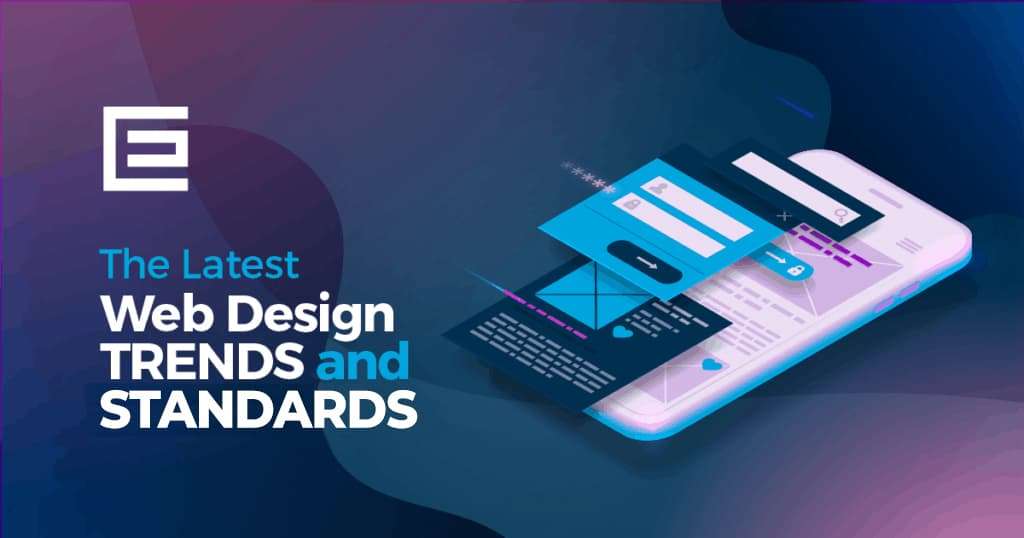In today’s digital landscape, a website is more than just an online presence; it’s a crucial element of your brand identity. To stand out from the crowd and captivate your audience, embracing modern web design trends is essential. These trends not only enhance the aesthetic appeal of your site but also improve user experience and drive engagement. Let’s explore 12 cutting-edge web design trends that will elevate your website to the next level.
1. Dark Mode Interfaces
Dark mode is no longer just a trendy option; it’s becoming a standard expectation for many users. It offers a visually appealing alternative while reducing eye strain.
- Benefits: Reduces eye strain, saves battery life (on OLED screens), and offers a sleek aesthetic.
- Implementation: Implement a toggle for users to switch between light and dark modes.
2. Micro-Interactions
These subtle animations and feedback mechanisms enhance the user experience by making interactions feel more responsive and engaging.
Micro-interactions are a great way to add a touch of delight to your website.
Examples of Micro-Interactions:
- Hover effects on buttons
- Loading animations
- Form validation feedback
3. Neumorphism
Neumorphism, a blend of “new” and “skeuomorphism,” creates a soft, embossed look using subtle shadows and gradients.
This style offers a clean and modern aesthetic, but accessibility considerations are crucial.
4. Glassmorphism
Glassmorphism is a design style that mimics the look of frosted glass. It uses transparency, blur, and subtle layering to create a visually appealing effect.
Glassmorphism can add a modern, sleek touch to your site.
5. 3D Elements
3D elements add depth and realism to your website, making it more visually engaging. These elements can range from subtle details to immersive experiences.
Using 3D elements can make your website more interactive and captivating.
6. Bold Typography
Bold typography is a powerful way to make a statement and grab attention. Large, impactful fonts can communicate your message effectively and create a strong visual hierarchy.
Choose fonts that align with your brand identity and are easy to read.
7. Asymmetrical Layouts
Breaking away from traditional grid-based layouts, asymmetrical designs offer a dynamic and visually interesting alternative. This can add a sense of creativity and uniqueness to your website.
Asymmetry can create visual interest and guide the user’s eye.
8. Motion Graphics
Motion graphics are animated visuals that can enhance storytelling and engage users. They can be used for everything from explaining complex concepts to adding a touch of personality to your website.
Motion graphics can be used to explain complex concepts or add a touch of personality.
9. Scroll-Triggered Animations
Animations that are triggered by scrolling can create a more interactive and engaging experience for users. As users scroll down the page, elements can animate into view, revealing content in a dynamic way.
These animations can guide the user’s eye and create a sense of flow.
10. Voice User Interface (VUI) Integration
With the rise of voice assistants, integrating voice user interfaces into your website can provide a more convenient and accessible way for users to interact with your content.
Voice search and voice commands are becoming increasingly popular.
11. Augmented Reality (AR) Integration
Augmented reality can overlay digital content onto the real world, providing a more immersive and interactive experience for users. This can be particularly useful for e-commerce websites, allowing customers to virtually try on products or see how furniture would look in their home.
AR can provide a more immersive and interactive experience.
12. Minimalism and White Space
Embrace simplicity with minimalist design principles. Ample white space (negative space) allows elements to breathe and creates a clean, uncluttered aesthetic.
Minimalism focuses on essential elements and clean design.
FAQ
Here are some frequently asked questions about modern web design trends:
What is the most important web design trend to focus on?
The most important trend depends on your target audience and business goals. However, focusing on user experience and accessibility is always a good starting point.
How often should I update my website design?
It’s generally recommended to refresh your website design every 2-3 years to stay current and competitive. However, smaller updates and tweaks can be made more frequently.
How much does it cost to redesign a website?
The cost of redesigning a website can vary greatly depending on the complexity of the project, the size of the website, and the agency or freelancer you hire. It’s best to get a quote from a few different sources.

